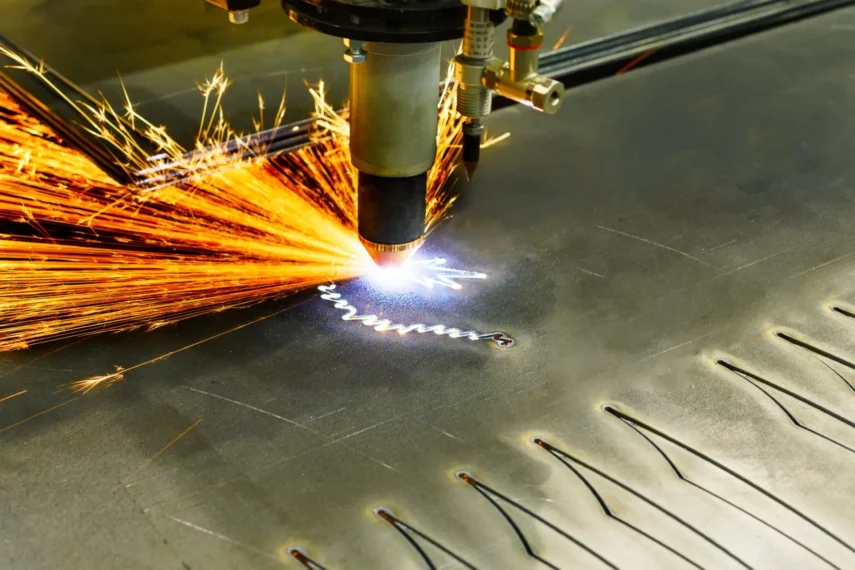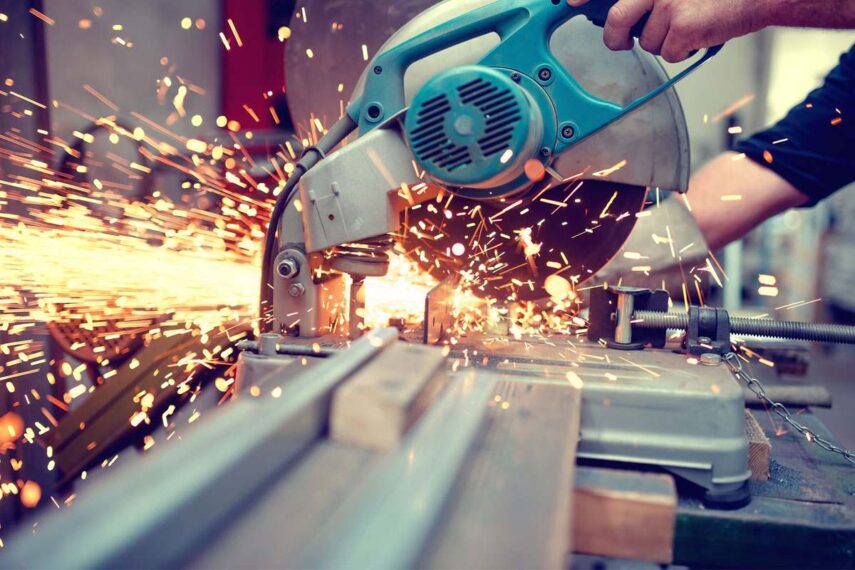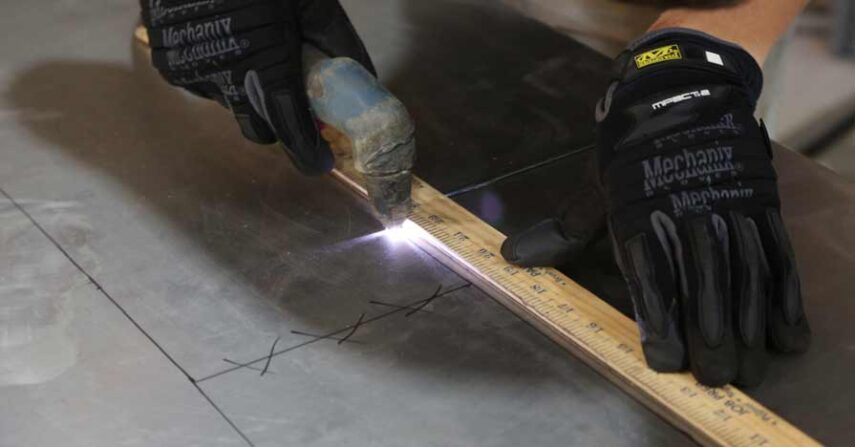Sheet metal cutting is a fundamental skill for anyone working with metal fabrication or metalworking. Whether you’re creating intricate designs, building structures, or repairing existing metal pieces, the ability to cut sheet metal accurately and efficiently is essential. However, mastering sheet metal cutting can be challenging, even for experienced professionals. That’s why it’s important to have access to the right tips and techniques to achieve perfect results.
Whether you’re building a prototype or mass-producing parts, sheet alloy fabrication requires precision and expertise. In this article, we will explore various methods and strategies for mastering sheet metal cutting, including tools, safety considerations, and best practices for achieving precise cuts every time. By the end of this article, you’ll have a solid understanding of how to cut sheet metal like a pro.
Choose the Right Cutting Tool

The first step to mastering sheet metal cutting is to choose the right cutting tool. There are several tools you can use to cut linen metal, including:
- Tin snips: Tin snips refer to handheld cutting tools used for slicing thin sheets of tin. These tools are available in various sizes and shapes, and selecting the appropriate one depends on the type of trimming required. The primary purpose of tin snips is to provide an efficient and precise way of trimming and pruning tin sheets. They are particularly useful for professionals and DIY enthusiasts who work with thin sheets of metal, including tin, aluminum, and copper. Using the appropriate snips ensures that the cutting process is smooth, with minimal distortion or damage.
- Shears: Shears are a type of cutting tool that is larger and more powerful than tin snips. They are designed to cut through thicker sheets of ingot and are often used in industrial settings. Shears are typically operated by a motor, making them more efficient and able to handle heavy-duty mowing tasks. They are commonly used in metalworking, fabrication, and construction industries. Unlike tin snips, shears are not hand-held and are typically operated using foot pedals or other mechanisms.
- Jigsaw: A jigsaw is a powerful trimming tool that uses a reciprocating blade to cut through a variety of materials. It is particularly useful for pruning curves and intricate shapes. The blade of a jigsaw moves up and down in a rapid, reciprocating motion, allowing for precise and controlled pruning. Jigsaws are available in various types and sizes, with some featuring adjustable speed settings and orbital actions for increased efficiency. Overall, a jigsaw is an excellent tool for metalworkers, woodworkers, and DIY enthusiasts who require precision cutting for curved or intricate shapes.
- Plasma cutter: A plasma cutter is a state-of-the-art mowing tool that employs an ionized gas jet to cut through alloys. It is a rapid and precise trimming method capable of slicing through thick metal sheets. Plasma cutters come in various sizes, from handheld devices to industrial-grade machines, making them suitable for a range of applications. They are commonly used in metal fabrication, automotive repair, and other heavy-duty industries.
Explore Laser Cutting as an Option
Laser cutting is a highly reliable and precise method used in various industries for cutting sheet metal with exceptional accuracy. This advanced process involves the use of a powerful laser beam that interacts with the sheet metal, resulting in clean and precise cuts. It offers numerous advantages that make it a preferred choice for many applications.
The process begins with the setup of the laser cutting machine, where the operator inputs the desired cutting specifications into the computerized control system. A high-intensity laser beam, typically generated by a CO2 laser, is then focused onto the surface of the sheet metal. The intense heat from the laser rapidly heats the material, causing it to melt or vaporize along the cutting line. This precise interaction between the laser beam and the sheet metal creates a narrow and well-defined kerf.
What sets laser cutting apart is its ability to deliver clean and accurate cuts with minimal heat-affected zones or deformations. Outlets such as zltechlaser.com can tell you more about that and provide ideal examples with their products. The laser beam’s precision allows for intricate designs, complex shapes, and tight tolerances to be achieved, ensuring the highest quality end product. The process is highly automated and efficient, enabling rapid production and consistent results once the cutting parameters are set. This efficiency contributes to shorter production times and increased productivity.
Furthermore, laser cutting offers versatility and customization options. It can handle various types of sheet metal, including stainless steel, aluminum, and brass, accommodating different thicknesses and sizes. This flexibility allows for the creation of customized components and parts tailored to specific requirements.
Prepare the Sheet of Metal

Before you start trimming the sheet metal, you need to prepare it properly. This involves measuring and marking the sheet metal, and making sure it’s secure and stable. Here’s what you need to do:
- Measure and mark: Use a ruler or measuring tape to measure the sheet metal and mark the cutting line with a permanent marker or scribe.
- Secure the leaf metal: Use clamps or a vice to hold the sheet metal securely in place. This will prevent it from moving or shifting while you’re cutting it.
- Protect the surface: If you’re shortening the sheet metal on a delicate surface, such as a table or workbench, place a piece of scrap wood or cardboard underneath it to protect the surface.
Choose the Right Technique

When it comes to sheet metal trimming, choosing the right technique is crucial to achieving the desired results. The technique you choose will depend on several factors, including the type of pruning tool you’re using, the thickness of the linen ingot, and the shape you need to cut.
For straight cuts, tin snips or shears are the go-to tools. These tools are best suited for cropping along a straight line, and they can handle thin to medium-thick sheet alloy. Shears are a more powerful version of tin snips, and they can cut through thicker sheets.
For curved cuts, a jigsaw or plasma cutter is a better option. A jigsaw uses a reciprocating blade that can cut through ore in a curved motion, making it ideal for creating intricate shapes. Plasma cutters use a jet of ionized gas to cut through alloys, making them fast and precise.
Finally, for notch cuts, tin snips or shears are the best choices. A notch cut is used to remove a small piece of the ingot from the edge of the sheet alloy, and tin snips or shears are ideal for this type of pruning.
Ultimately, the key to choosing the right technique is to consider the specific needs of your project and to select the cutting tool and technique that will deliver the best results. By taking the time to choose the right technique, you can ensure that your leaf alloy trimming project is a success.
Conclusion

In conclusion, mastering sheet metal cutting is a skill that requires knowledge, practice, and attention to safety. By following the tips and techniques outlined in this article and avoiding common mistakes, you can achieve perfect results and take your metalworking projects to new heights. Furthermore, it’s important to note that mastering sheet metal cutting is not just about achieving perfect results but also about optimizing cutting speed and efficiency. With advanced techniques and strategies for cutting thicker sheet metal or irregular shapes, you can enhance your productivity and reduce wastage. Remember, there’s always room for improvement, and by continuously learning and experimenting with different techniques, you can take your sheet metal cutting skills to the next level and achieve the precision and efficiency you need for your projects. So keep practicing, keep learning, and keep mastering sheet metal cutting!







